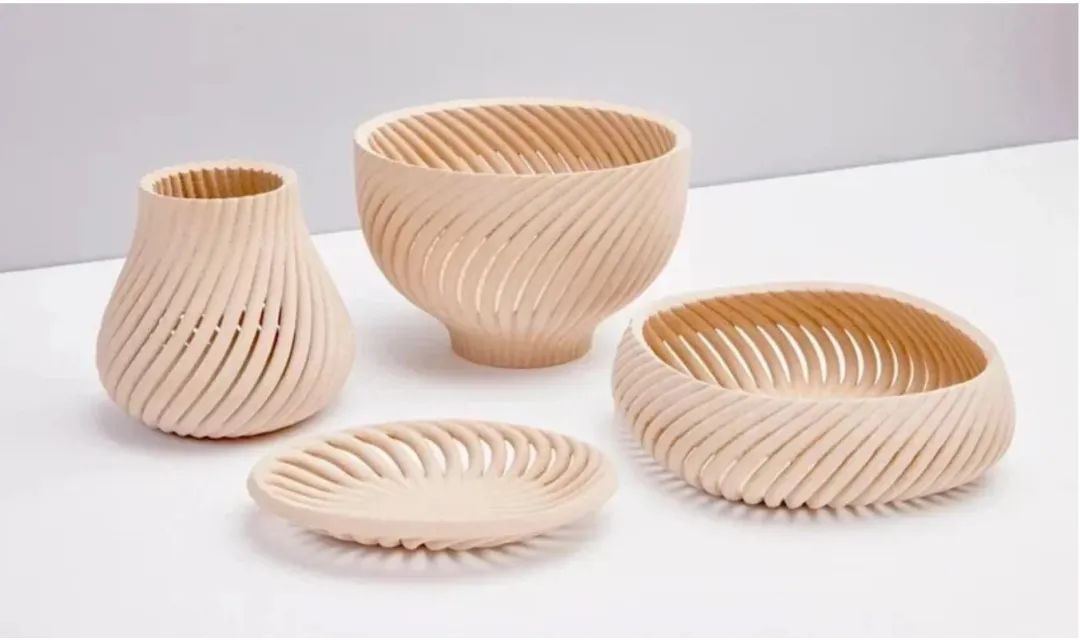When we talk about additive manufacturing and materials, we usually think of plastic or metal. However, 3D printing compatible products have grown significantly over the years. We can now use various raw materials to produce parts, from ceramics to food to hydrogels containing stem cells. Wood is also one of these expanded material systems.
Now, wood materials can be compatible with filament extrusion and even powder bed technology, and wood 3D printing is becoming more and more popular.
According to a report published by Nature magazine, human beings have lost 54% of the total number of trees on the earth. Deforestation is a real threat today. It is important to rethink the way we consume wood. Additive manufacturing may be the key to more sustainable use of wood, because it is a production technology that only uses necessary materials, and can use recycled materials to design items. Therefore, we can 3D print parts. If they are no longer useful, we can convert them back to raw materials to start a new production cycle.

Extruded wood 3D printing process
One way to print wood in 3D is to extrude filaments. It should be noted that these materials are not 100% made of wood. They actually contain 30-40% wood fiber and 60-70% polymer (used as adhesive). The wood 3D printing manufacturing process itself is also very interesting. For example, you can test the different temperatures of these wires to produce different colors and finishes. In other words, if the extruder reaches a high temperature, the wood fiber will burn, resulting in a darker tone in the debris. But remember, this material is highly flammable. If the nozzle is too hot and the wire extrusion speed is not fast enough, the printed part may be damaged or even catch fire.
The main advantage of wood silk is that it looks, feels and smells like solid wood. In addition, prints can be easily painted, cut and polished to make their surfaces more realistic. However, one of the most obvious disadvantages is that it is a more fragile material than standard thermoplastic. Therefore, they are easier to break.
Generally speaking, this material will not be used in the industrial environment, but for the maker world, where it is used as a hobby or decorative object. Some major wood fiber manufacturers include Polymaker, Filamentum, Colorfabb or FormFutura.
Use of wood in the powder bed process
For the production of wooden parts, powder bed technology can also be used. In these cases, a very fine brown powder composed of sawdust is used, and the surface is sand-like. One of the most relevant technologies in this field is adhesive spraying, which is most famous for Desktop Metal (DM). DM has opened a new door in the additive manufacturing world after cooperating with Forust. The “Shop System Forest Edition” printing system jointly developed by the two allows a wider audience to use Binder Jetting for wood 3D printing.
This printing system can 3D print functional end-use wood components made from recycled wood. The actual manufacturing technology uses sawdust particles and adhesives in the process of computer control. Using the layer-by-layer manufacturing system, it is possible to create wood components that are difficult to achieve by traditional subtraction methods and are wasteless. Obviously, the price of this technology will be much higher than that of filament extrusion method. However, this is worth considering because the final result will have a higher surface quality than the FFF printed part.
In addition to being considered as a more sustainable wood manufacturing mode, wood 3D printing can also solve many problems. This includes from the restoration of history to the creation of luxury goods, to the use of these natural materials have not yet imagined new products. Because it is a digital process, users without carpentry skills can also enjoy the benefits of wood 3D printing.
Post time: Feb-09-2023

